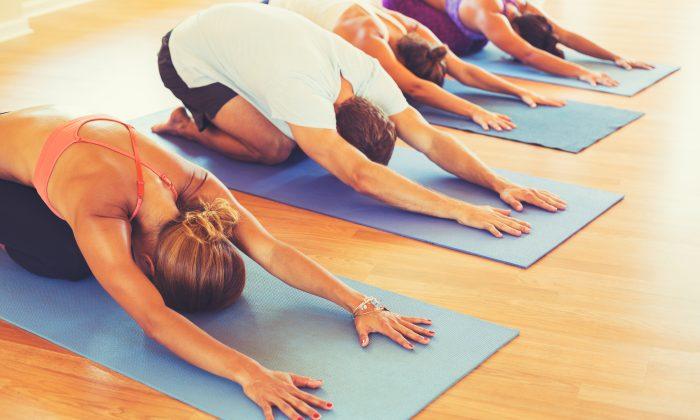A common question that I’m asked by my students is, “How can I become less stressed and have more energy, without diminishing my drive and ambition for success?”
Well, the opposite of stress is relaxation. Think of the yin yang symbol and ask, “If one exists because of the other, then what do you need to do when you feel stressed?”
Relax.
Ask any yogi what the best asanas are for relaxing the body and the majority would say inversions and twists.
In order to sooth the adrenals, you must detoxify and nurture—or in terms of yoga, twist and invert.
As you twist, you detoxify organs such as the kidneys and the adrenal glands, which rest on top of each kidney. As you twist, imagine gently squeezing the adrenal glands and eliminating any toxins, stagnant blood, and stale hormones.
As you invert, you flood the brain with fresh blood, oxygen, and nutrients. So imagine nurturing your hypothalamus (the area of the brain that controls the endocrine [hormonal] system via the pituitary gland) with extra portions of fresh blood and oxygen.
If there were a hierarchy of things to do to sooth your adrenal glands, the big boss would be meditation.
Through meditation, you are eliciting what scientists call “The Relaxation Response.” This response happens once you switch from using your sympathetic nervous system (fight or flight) to using your parasympathetic nervous system (feed and breed).
When you meditate for five minutes or more, you are telling your body, “It’s now time to rest, digest my food, rebuild from any stress placed on the body, and relish in happy thoughts and actions.” In terms of your body’s biochemistry, you are telling your body, “Breathe deeply to calm the nerves, so that they can tell the adrenals to relax and stop flooding my bloodstream with epinephrine (adrenaline) and cortisol (steroid).”
For people who suffer from fatigue, less is more! So choose restorative poses that use props, such as straps, blocks, blankets, and bolsters. Restorative poses are simplified modifications of traditional poses and are held longer to allow the body to rest and heal within the pose. Restorative yoga is a great way to get energy without spending energy.
Set a timer for five minutes and pick a pose below. Practice three or more poses for five minutes each, once or twice a day.
Viparita Karani (Legs Up the Wall)

Supta Jathara Parivartanasana (Supine Spinal Twist)

Supported Headstand

Happy Baby Pose

Child’s Pose

Supported Supta Baddha Konasana (Supine Bound Angle Pose)

Supported Setu Bandha Sarvangasana (Supported Bridge Pose)

Michael Kanter Star is a writer, chef, poet, photographer, and certified yoga instructor. This article was originally published on NaturallySavvy.com




Friends Read Free